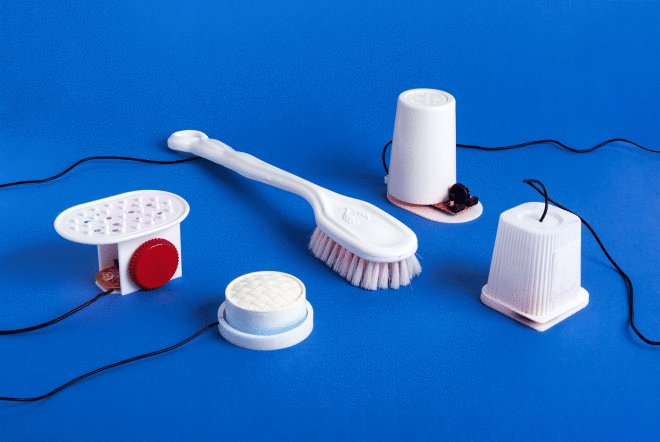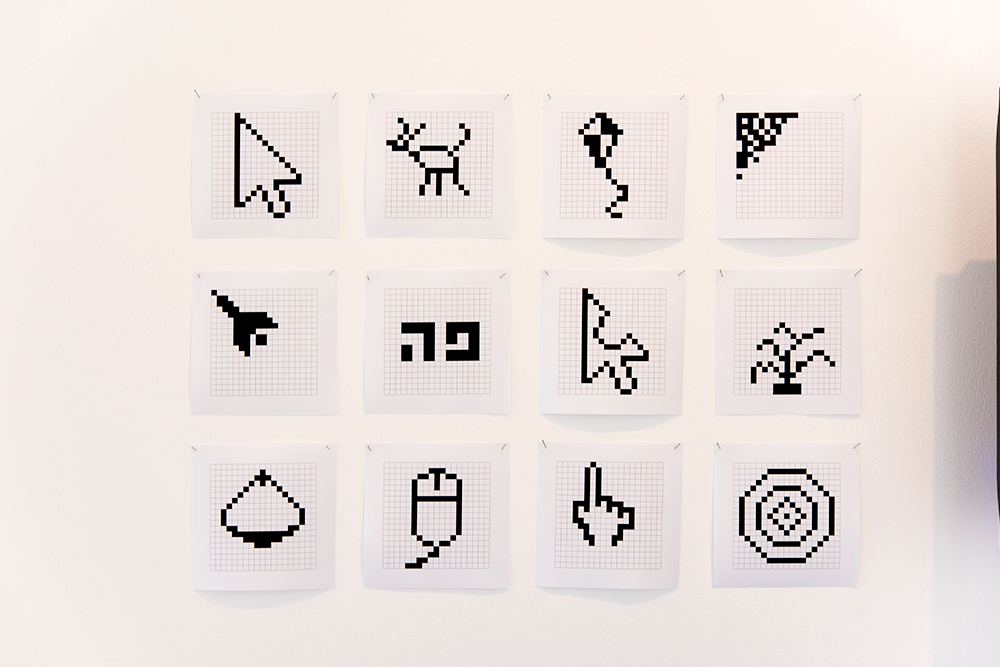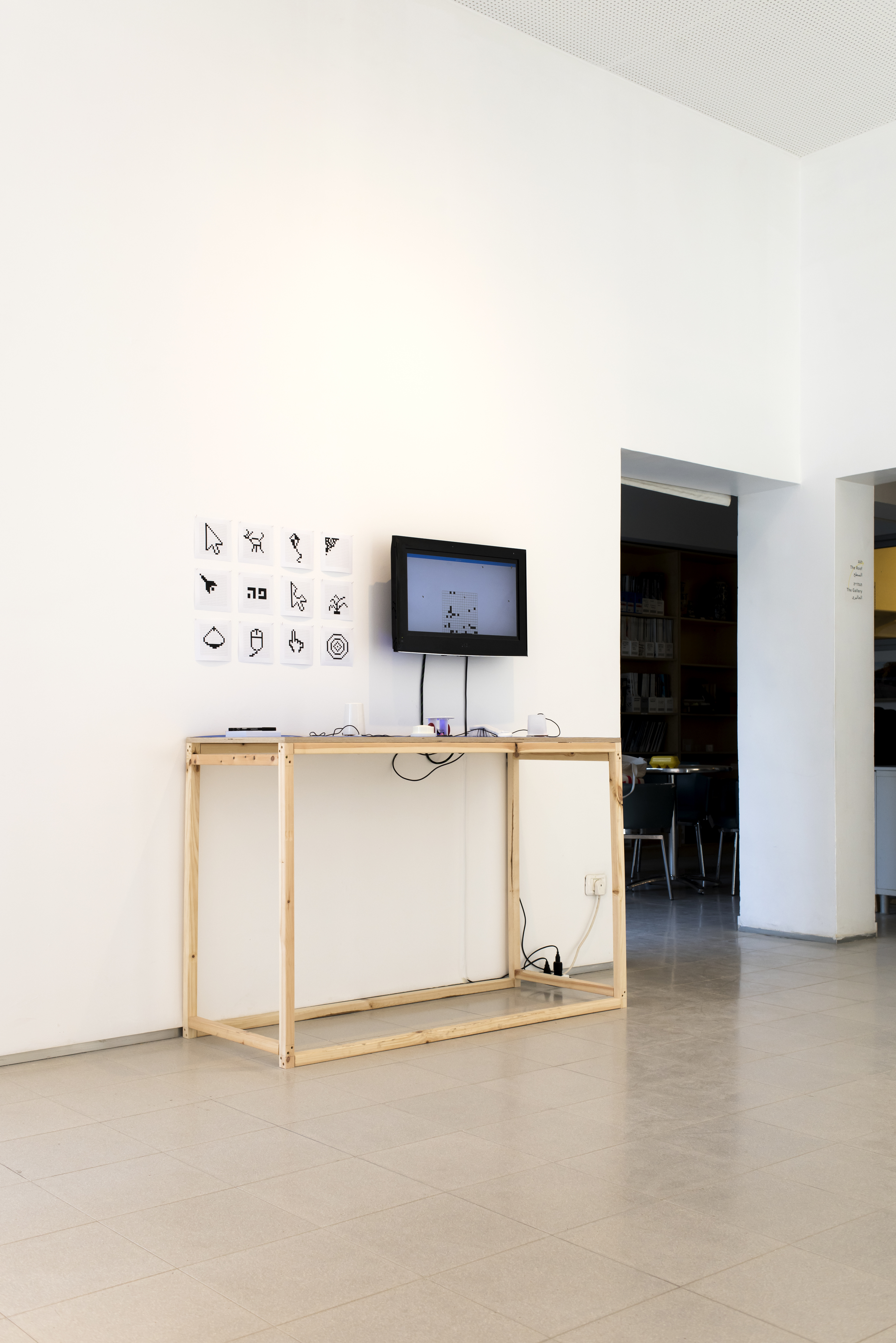Lab.Mouse.
2017
In collaboration with Rona Zinger
Made for the ‘Image’ exhibition,
Benyamini ceramic center, Tel Aviv.
2017
In collaboration with Rona Zinger
Made for the ‘Image’ exhibition,
Benyamini ceramic center, Tel Aviv.
Mouse.
The mouse and cursor live in parallel, complimentary dimensions; the physical object and its virtual imagery. They are interdependent - they can never meet, and they will never part. The mouse in the physical sphere is, for the most part, nothing more than a plastic shell that takes on our palm, an object containing an optic sensor that responds to the movement of our hand and converts it to virtual movement. In the digital sphere, the mouse becomes a cursor - a symbolic image of a black outline in the shape of an arrow. Since its creation in the 1960s, the cursor underwent only one change. Its inventor, Douglas Engelbart, designed it as an upward pointing arrow. The cursor was later tilted sideways, the left edge creating a 90° angle. This change was driven by the low screen resolution at the time, and made the 48-pixel arrow more visible. In the year since its introduction into our lives, the mouse had become the most used tool in the virtual sphere, a phantom limb, a digital extension of ourselves. It has become invisible from use, unmarked by the years. We often hold on to it as our eyes gaze at the screen, at times mistaking another piece of plastic for it - only when it would not yield the desired virtual feedback will we divert our gaze and realize our mistake.
Lab.
This project is the mouse and cursor dismantling and reassembly laboratory. Black pixels are grouped together by different people to form new structures, and thin, mass-produced plastic shells disguise themselves as the mice we know.
The mouse and cursor live in parallel, complimentary dimensions; the physical object and its virtual imagery. They are interdependent - they can never meet, and they will never part. The mouse in the physical sphere is, for the most part, nothing more than a plastic shell that takes on our palm, an object containing an optic sensor that responds to the movement of our hand and converts it to virtual movement. In the digital sphere, the mouse becomes a cursor - a symbolic image of a black outline in the shape of an arrow. Since its creation in the 1960s, the cursor underwent only one change. Its inventor, Douglas Engelbart, designed it as an upward pointing arrow. The cursor was later tilted sideways, the left edge creating a 90° angle. This change was driven by the low screen resolution at the time, and made the 48-pixel arrow more visible. In the year since its introduction into our lives, the mouse had become the most used tool in the virtual sphere, a phantom limb, a digital extension of ourselves. It has become invisible from use, unmarked by the years. We often hold on to it as our eyes gaze at the screen, at times mistaking another piece of plastic for it - only when it would not yield the desired virtual feedback will we divert our gaze and realize our mistake.
Lab.
This project is the mouse and cursor dismantling and reassembly laboratory. Black pixels are grouped together by different people to form new structures, and thin, mass-produced plastic shells disguise themselves as the mice we know.




